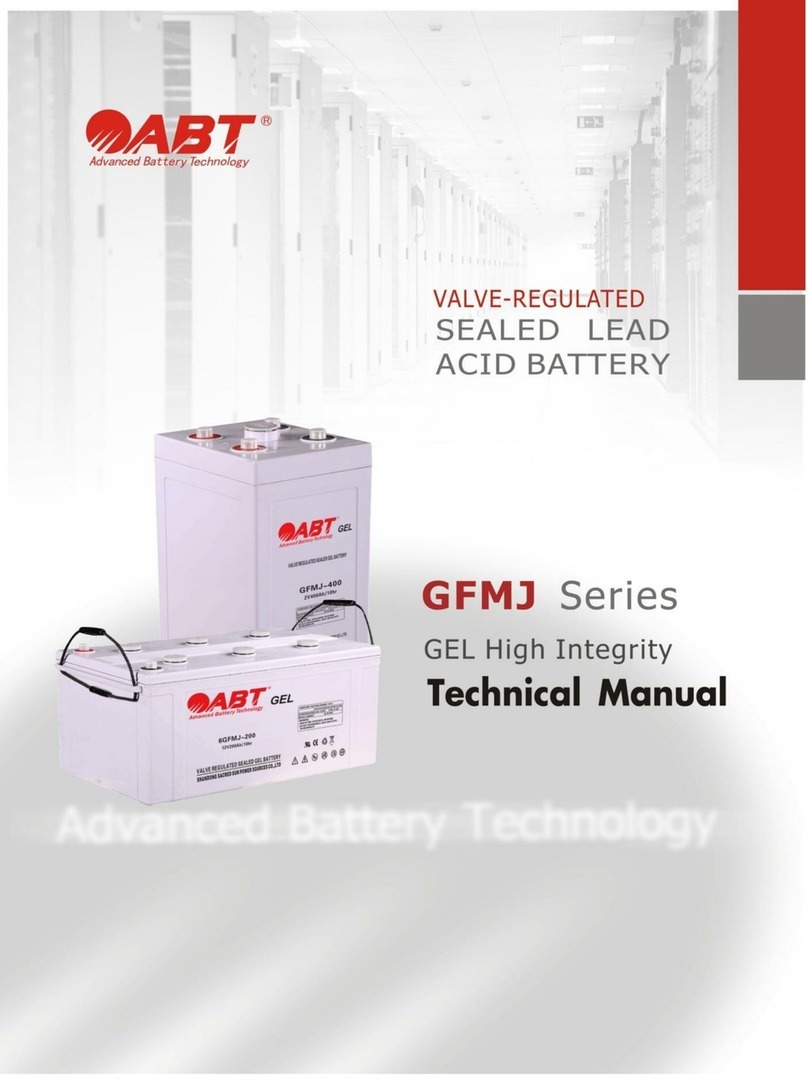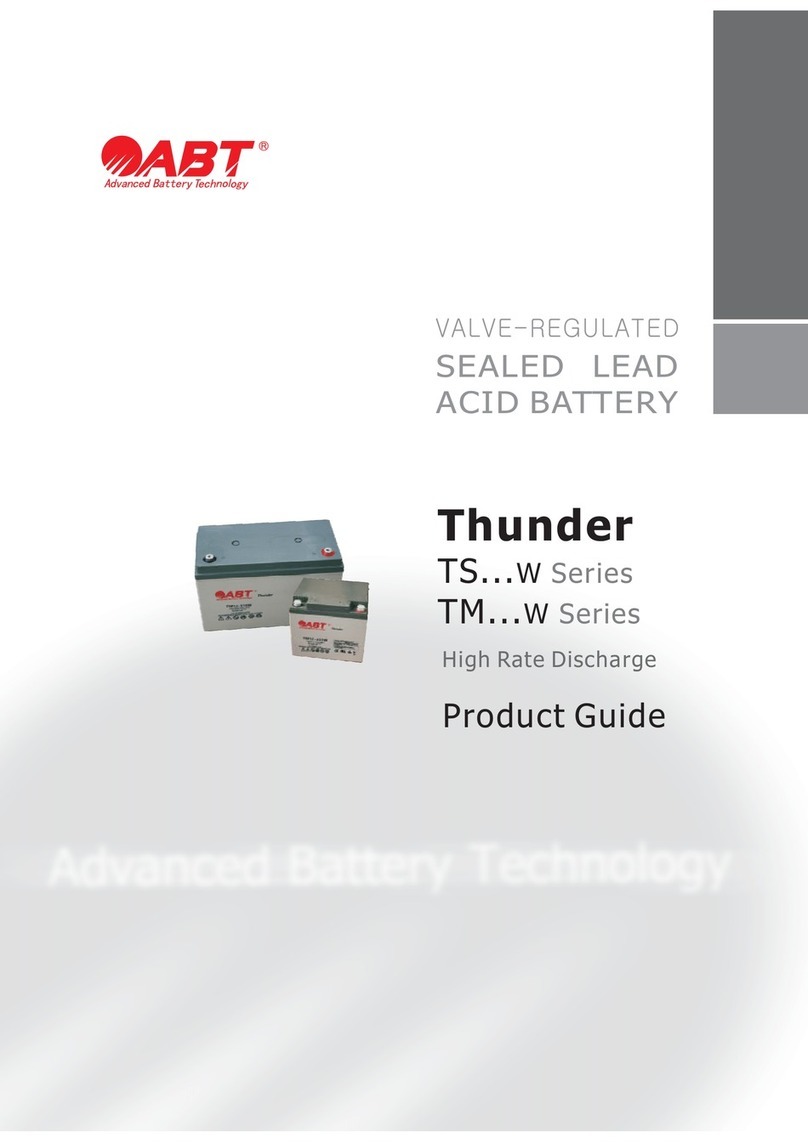
08
POWERLINE
SC SERIES
Charge
When this charging method is used, the output
values will be as follows:
InitialChargeCurrent.....0.30CAmps(max.)
Charge Voltage:
1stStage.........2.45V/cell(2.40to2.50
v/cell, max.)
2ndStage........2.275V/cell(2.25 to 2.30
v/cell, max.)Switching Current From
1stStageto2ndStage..........0.05CAmps
(0.04C to 0.08C Amps)
Note:Thischargingmethodcannotbeusedin
applications where the load and the battery are
connected in parallel.
The C.V.C.C. is a fully regulated automatic charging
module designed for batteries. There are two 6 volt
versions available; one for standby applications and
the other for cyclic applications. Also there are two 1
2 volt versions available, again one for standby
applications and the other for cyclic applications.
When interfaced with the appropriate AC or DC
power supply, the C.V.C.C. guarantees safe charging
andmaximumbatterylife.Figure18isablock
diagram of the C.V.C.C.
The C.V.C.C. modules are protected from both the
short circuiting of their D.C. output voltage and from
being reverse polarity connected to the battery.
Detailed specifications are available on request.
In designing a solar powered system, consideration
shouldbegiventothefactthatinadditiontonormal
periods of darkness, weather conditions may be such
that solar energy is limited, or virtually unavailable
forlongperiodsoftime.Inextremecases,asystem
mayhavetooperatefor10to20dayswithlittleorno
power available for charging. Therefore, when
selecting the correct battery for a solar application,
the capacity should be determined based upon
maximum load conditions for the maximum period of
timethesystemmaybeexpectedtobewithout
adequate solar input.
In many instances the battery capacity will be 10 to
50 times greater than the maximum output of the
solar panels. Under these circumstances, the
maximum output of the solar array should be
dedicated to charging the battery with no load
sharing or intervening control devices of any kind.
Naturally, in cases where the output of the solar array
exceeds the capacity of the battery, and weather
conditions are such that the potential for
overcharging the battery exists, appropriate
regulated charging circuitry between the solar panels
and the battery is recommended.
Remote sites and other outdoor applications is where
most solar powered systems are to be normally found.
Whendesigningasolarpoweredsystemforthisclass
of application, a great deal of consideration must be
given to environmental conditions. For example,
enclosures which may be used to house batteries and
other equipment may be subject to extremely high
internal temperatures when exposed to direct
sunlight. Under such conditions, insulating the
enclosure and/or treating the surface of the enclosure
with a highly reflective, heat resistive material is
highly recommended.
In general, when designing a solar powered system,
consultation with the manufacturers of both the solar
panel and the battery is strongly advised.
The charging voltage should be chosen according to
the type of service in which the battery will be used.
Generally, the following voltages are used:
Forfloat(standby)use.......2.25to2.30volts
per cell
Forcyclicuse.. ..2.40to2.50voltspercell
In a constant voltage charging system, a large amount of
current will flow during the initial stage of charging but will
decrease as the charging progresses. When charging at
2.275 volts per cell, the current at the final stage of
charging will drop typically to a value of between 0.0005C
Amps and 0.004C Amps. When a battery has been charged
up to a level of 100% of the discharged ampere hours, the
electrical energy stored and available for discharge will be
90% or more, of the energy applied during charging.
Charging voltage should be regulated in relation to
C.V.C.C. CONSTANT VOLTAGE, CONSTANT
CURRENT CHARGE MODULE
Charging Voltage
Solar Powered Chargers
A battery is an indispensable component of any solar
poweredsystemdesignedfordemandenergyuse.Since
solar cells have inherent constant voltage
characteristics, Powerline SC can be charged directly
from the solar array using a simple diode regulated
circuit as shown in Figure 19.
Figure 19. BLOCK DIAGRAM OF A
SOLAR POWERED CHARGING SYSTEM
SOLAR CELL
OR PANEL LOAD
BATTERY
Figure 18. Block diagram of C.V.C.C.
C.V.C.C.
CHARGE UNIT
WHITE
WHITE
BLUE
GREEN
BLUE
YELLOW
BLACK
RED
LED
LED
LED
LED
+
{
{
{
{
Input
Input Indicator
Charge Indicator
DC Output
+
+





























